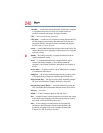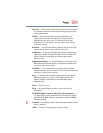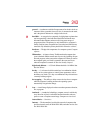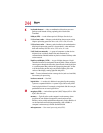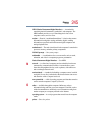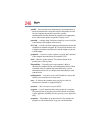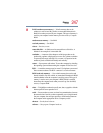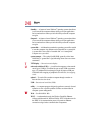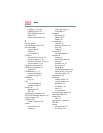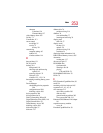
Glossary
Ter ms
246
parallel — Processes that occur simultaneously. In communications, it
means the transmission of more than one bit of information at a time.
On your computer, the parallel port provides a parallel
communications interface between the computer and an appropriate
device. Most modern printers are parallel. Compare serial.
password — A unique string of characters entered by a user to verify his
or her identity to the computer or the network.
PC Card — A credit-card-sized expansion card designed to increase the
capabilities of notebook computers. PC Cards provide functions such
as modem, fax/modem, hard disk drive, network adapter, sound card,
or SCSI adapter.
peripheral — Any device, such as a printer or joystick, that is attached
to the computer and controlled by the computer’s CPU.
pixel — Short for “picture element.” The smallest dot that can be
produced on a screen or printer.
Plug and Play — Generally, refers to the computer’s ability to
automatically configure itself to work with peripheral devices. When
capitalized, refers to a standard that, when followed by a device
manufacturer, allows a PC to configure itself automatically to work
with the device.
pointing device — Any device, such as the TouchPad or a mouse, that
enables you to move the cursor on the screen.
port — A socket on the computer where you plug in a cable for
connection to a network or a peripheral device.
processor — See central processing unit (CPU).
program — A set of instructions that can be executed by a computer.
The general classes of programs (also called software) are operating
system, application, and utility. See also operating system, application,
utility.
properties — The attributes of an object or device. For example, the
properties of a file include the file’s type, size, and creation date.





